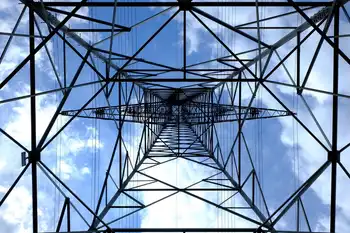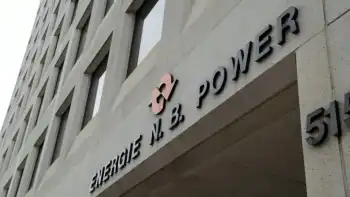State loan sought for advanced coal project
By Columbus Dispatch
High Voltage Maintenance Training Online
Our customized live online or in‑person group training can be delivered to your staff at your location.

- Live Online
- 12 hours Instructor-led
- Group Training Available
In Ohio, however, the electric cooperative American Municipal Power says the term also applies to a 1,000-megawatt coal-fired power plant that it wants to build along the Ohio River.
The Columbus-based company has asked for a $30 million, low-interest loan using money that state lawmakers and Gov. Ted Strickland set aside last year for advanced-energy projects.
State officials have yet to approve the loan, but they and American Municipal Power say the proposed plant qualifies because it would use a new type of scrubber that would capture pollutants that help create smog, soot and acid rain.
"We want to make sure that what is being built in Ohio is a next-generation technology that is as clean as can be," said Kimberly Gibson, assistant energy adviser at the Ohio Air Quality Development Authority.
"This technology fits that equation."
But environmental advocacy groups say that the proposed plant is similar to older plants in Ohio and that the scrubber system won't cut the plant's expected annual emissions of 7.5 million tons of carbon dioxide, the key ingredient in global warming.
State and federal laws set no limits on the amount of carbon-dioxide pollution that can be released from power plants. However, the U.S. Environmental Protection Agency is expected to begin regulating carbon dioxide and other greenhouse gases.
"Politicians in Ohio bend over backward to do anything they can to get coal into the mix," said Sandy Buchanan, director of Ohio Citizen Action. The group opposes the proposed $3.25 billion plant, to be built near Letart Falls in Meigs County.
Kent Carson, an American Municipal Power spokesman, said the plant is advanced because it will burn coal more efficiently than older Ohio plants and because its scrubbers and pollution filters are part of its original design.
"The other plants had to have (scrubbers) retrofitted," Carson said.
The state helped energy companies finance those projects.
American Municipal Power's request comes at a time when the economic recession is forcing other power companies to delay new power-plant projects and cut back on spending plans to build them.
The Edison Electric Institute, a power-industry trade group, estimates that utilities will spend about $230 billion on construction and plant-maintenance projects through 2010, about 10 percent less than originally planned.
American Electric Power will cut its spending about 22 percent to $2.6 billion in the same period to compensate for declining electricity demand from business and industries, spokeswoman Melissa McHenry said. That will include a delay in plans to build a natural-gas-fired plant near Dresden in Muskingum County, she said.
American Municipal Power hopes to start building its plant by 2010. The loan money it requested would come from a $1.57 billion state economic-stimulus plan that the General Assembly enacted last year. The plan set aside $150 million for advanced-energy projects and requires that $66 million of that amount be spent on so-called "clean-coal projects."
"Clean coal" is commonly used to describe any process that cuts pollution that contributes to climate change.
Power-industry lobbying groups, including the Washington, D.C.-based American Coalition for Clean Coal Electricity, also use the phrase to describe scrubbers and filters that capture other pollutants.
Carson said the new scrubber system would use ammonia to reduce sulfur dioxide, a pollutant linked to acid rain as well as smog and soot pollution. Most Ohio power plants that have scrubbers use lime or crushed limestone.
The new scrubbers would turn sulfur dioxide into ammonium sulfate, a fertilizer that American Municipal power hopes to sell. Lime-based scrubbers produce gypsum, which can be used to make drywall.
Jack Shaner, a lobbyist with the Ohio Environmental Council, said a new scrubber shouldn't count as "advanced energy." He said "that term should refer to power plants that turn coal into a gas before it is burned.
American Electric Power has said that it wants to build such a plant that could strip out pollutants and carbon dioxide before the coal gas is ignited.
"It is truly the cleanest of potentially clean coal," Shaner said.
Power companies also are studying how to bury carbon dioxide in the ground. Buchanan argues that there is no such thing as "clean coal," pointing to the soil and water pollution wrought by mining.
"The whole cycle of coal is filthy," she said.











